How to Handle the Most Common Arena Maintenance Issue
A dusty horse arena is unhealthy for horse and rider alike and may pose significant health risks. Along with eliminating dust, you need water as a binder for the sand grain to stick together and keep your footing stable to avoid shifting and creating deep spots. In this article, we’ll examine arena dust control methods.
How often should I water my horse arena?
In an ideal world you would water your arena like your LAWN!
However, water is a limited resource, especially in drought-stricken states and freezing climates where watering is not an option.
One alternative to water would be to use a high-tech polymer-coated sand footing, which does not require any water. This type of water-free footing is very expensive and does not have a long ‘shelf life’ as it seems to over-compact and get hard within a few years.
What exactly is DUST and can it be prevented?
Dust is created by fine particles in the sand, like clay and silt. Sand grains break down into fines over time—some type of sands brake down faster (like concrete sand, washed plaster sand, masonry sand) than others (quartz sand). If you get unwashed sand, like a sandy loam, you will have silt and clay from day one and it will only get worse once the sand decomposes into more fines. If you have access to controlled watering, then clay can act as sponge in your sand and only limited water is needed to control dust. However, if you have clay sand in your outdoor arena and you live in an high-precipitation climate, your arena footing will take a very long time to dry up after rain.
So, to get the dust under control from the get-go, invest in a high quality washed Quartz sand.
You can also slow down the breakdown process of common sands by introducing sand additives like geotextiles to your footing, which help reduce the friction between sand particles and adds cushioning.
However, you still need water or another dust binder product to keep the sand grain connected with the geotextiles.
How can I control dust in my horse arena?
Water is by far still the best dust and binding product, if available and if it is ethical to use as it is so precious.
Only one good rain shower with 1 inch of precipitation once a week will keep your outdoor arena nicely moist and the arena footing at its best.
If you need to use water in drought-stricken areas, use it wisely. We recommend watering once at night, but thoroughly so that the entire footing is wet down to the base. It is a waste of water to irrigate during the day, particularly with winds and evaporation and when only the top inch is watered. The arena footing will not be stable and once you enter the arena, your horse will sink in deeper and bring up the dry sand.
Application of Water
The application of water should be done efficiently with the least amount of waste.
In an ideal world, you would install an underground watering system like our HIT Active Aqua System when you build your arena, which waters evenly and efficiently from below.
The second best option to save and evenly apply water to your arena footing is to use
our PLATZ MAX Rain, an arena drag with an integrated water tank, which sprays the water right INTO the arena footing instead of just on top of it. This arena drag has been proven to be
really efficient in water conservation.
Overhead sprinkler systems are an option, but it is extremely challenging to install one that waters evenly. Plus, in a covered arena, evaporation and wind waste a lot of water and they cannot be used in freezing temperatures.
There are a number of other dust control options and products, including:
Magnesium and Calcium Chloride / Salt
The most common and affordable dust suppressant is salt, and is mainly used in colder climates for indoor arenas where watering is not possible. The salt attracts moisture out of the air and pulls it into the footing. This is very efficient in indoor arenas with high humidity. It does come with downsides, however: Calcium and Magnesium Chloride can dry up your horse’s hooves. So you always have to make sure to hose off the hooves and your boots after riding. The same goes to your arena drag—the steel will corrode and rust in no time.
For outdoor arenas, multiple applications are necessary as the Chlorides wash out with each rain.
Wax and Polymer Sand Treatments
We find this type of arena footing expensive and very temperamental to any climate change, from cold nights to hot days with strong UV rays, and between dry and wet weather. This type of arena footing does best in indoor arenas with somewhat consistent humidity.
Spray on Coating/ Binding products
You can spray your arena footing with a dust control product of organic substance like Hydro SandBinder. It is an emulsion which coats the sand grain and therefore fights dust with a mild binding effect, so it does not change the characteristics of your arena footing. Each application lasts 12-16 months in indoor and outdoor arenas and has a cumulative effect on arena footing. The second application would be only half of the initial amount.
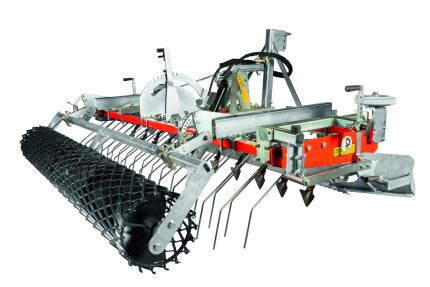
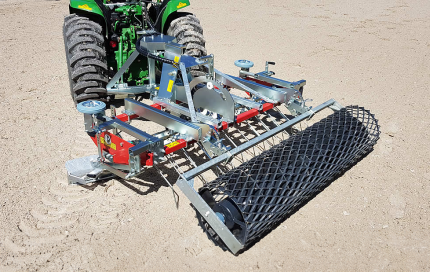
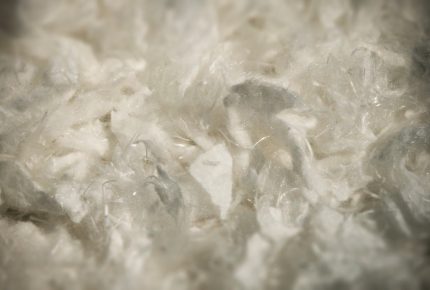
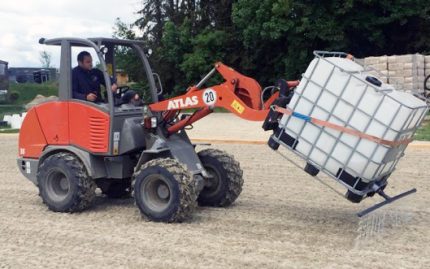
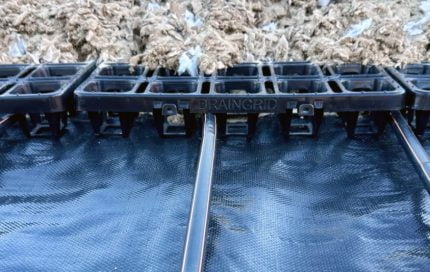
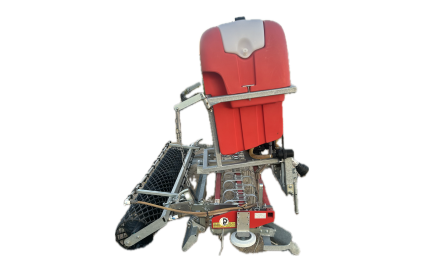
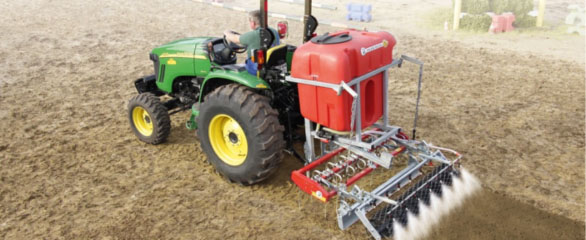
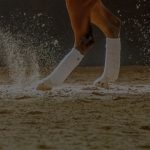 Geotextile Arena Footing
Geotextile Arena Footing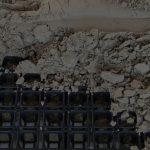 Ground Mats and Grids
Ground Mats and Grids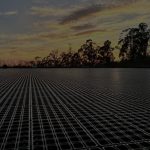 Subsurface Irrigation
Subsurface Irrigation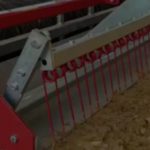 Arena Drags & Groomers
Arena Drags & Groomers Mirrors and Kickwall
Mirrors and Kickwall Horse Wellness
Horse Wellness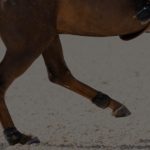 Dust Control
Dust Control